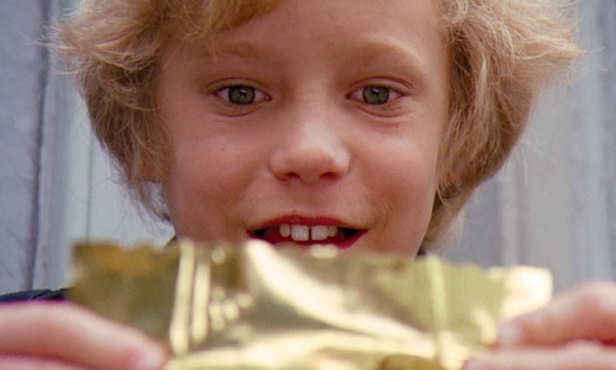Books are dangerous. Books mess with your head. Books fill children’s minds with subversive, warped and – to use a word we suspect Roald Dahl would loathe – ‘concerning’ ideas.
Don’t believe us? Consider Dahl’s The Witches, one of the most popular children’s books ever written. It’s sold umpteen million copies, and it’s now being developed as a new Hollywood film, with Robert Zemeckis directing and Anne Hathaway attached as the Grand High Witch, the most terrifying monster in the world (this will be the second film of The Witches; the first had a gloriously putrid Anjelica Huston).
This is how Dahl introduced the witches in his original novel: ‘As far as children are concerned, a REAL WITCH is easily the most dangerous of all the living creatures on earth. What makes her doubly dangerous is the fact that she doesn’t look dangerous… For all you know, a witch might be living next door to you right now. Or she might be the woman with the bright eyes who sat opposite you on the bus this morning…
‘She might even – and this will make you jump – she might even be your lovely school-teacher who is reading these words to you at this very moment. Look carefully at that teacher. Perhaps she is smiling at the absurdity of such a suggestion. Don’t let that put you off. It could be part of her cleverness.’
Talk about messing with your head.
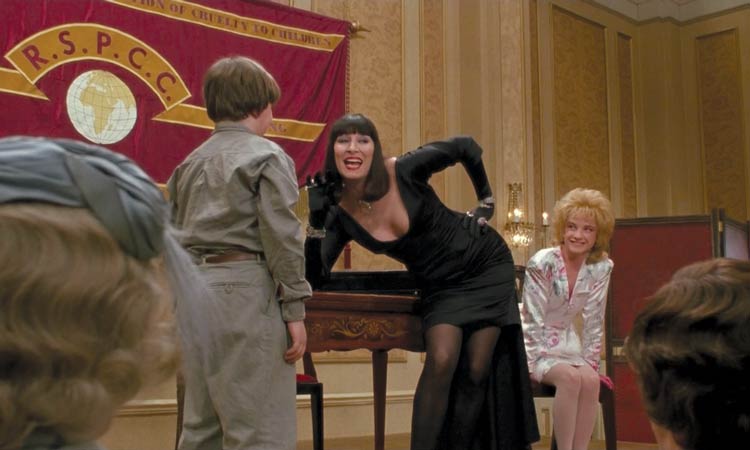
Dahl was always a scary fellow. Two decades before he made kids around the world look twice at their smiling school-teachers, he made perhaps his first ever screen appearance, not on British TV but in America. It was on a 1961 series called Way Out. This was a short-lived, black-and-white series that screened in the slot before The Twilight Zone. Dahl was Way Out’s host, but rather than imitate the somber, serious Rod Serling, he adopted the persona of a playfully malevolent Brit; Alfred Hitchcock without the stomach.
In the first episode, Dahl appears in a studio, cigarette in hand. Behind him, his image is repeated by a TV camera to infinity, a video fun house.
“Now you may find that this particular play disturbs you just a tiny bit as it goes along,” Dahl purrs to the audience. “If it does, let me assure you that that’s nothing compared to what it did to me when I wrote it. I thought it was perfectly beastly… It is not for children; it is not for young lovers, either, or for people who have stomach difficulties. It is more perhaps for wicked old women who relish a juicy plot where all sorts of nasty things happen that they can wish upon their closest friends and their loving husbands…”
The story that follows is Dahl’s own ‘William And Mary’, where a dying man takes the chance to have his life prolonged by cutting-edge science. Unfortunately, the science really is cutting. All that remains of the man after the operation is his brain, alive and conscious, plus a single eyeball. At least Way Out’s viewers were spared the images in Dahl’s original prose, where the man’s amazed wife is introduced to her downsized hubby…
“He reminded her of nothing so much as an enormous picked walnut…” Dahl writes with relish. “The eye, bright as ever, stared back at her with a peculiar, fixed intensity.” The wife decides her new husband is adorable. “I just can’t wait to get him home.”
The Witches and ‘William And Mary’ are representative of the two public sides of Roald Dahl. One is the famous children’s writer who gave us Charlie And The Chocolate Factory, James And The Giant Peach, The BFG, Matilda and many other books and poems. Ah, those poems… How many kids who grew up on Dahl will think of Red Riding Hood as the story in which girl meets wolf, girl whips a pistol from her knickers, and girl shoots wolf dead? That’s how you tell a fairy tale.
The other Dahl is the one for grown-ups, associated with twisty, macabre short stories. They were collected in books like Tales Of The Unexpected, which also became the name of another TV series hosted by Dahl. Made in Britain in colour, it was a thousand times as successful as Way Out. The opening credits helped, with Bond-style images and a jovial, cosy-sinister earworm by Ron Grainer, who’d made Doctor Who sing.
Today, 30 years after he died, the ‘adult’ Dahl has been eclipsed by Dahl the beloved kids’ writer. “I think there’s no doubt that if you asked the average person today what Dahl was famous for, they’d say children’s fiction,” says Steve Gardam, director of the Roald Dahl Museum And Story Centre in Great Missenden in Buckinghamshire, where Dahl lived for the last 36 years of his life.
“With some older people, with a bit of prompting they might remember Tales Of The Unexpected…” Gardam says. “And there are people like me who graduated from Dahl’s children’s writing and went on to his adult fiction. However, the screen adaptations of the children’s stories have been on a Hollywood scale and consolidated the success of those books.
“But I hope the vitality of Dahl’s adult fiction isn’t forgotten,” he continues. “The first phase of his writing career was stories for adults, and this became the fuel for the children’s fiction that came after.” Asked what makes Dahl’s writing distinctive, Gardam points to its spark (a word Dahl did like). “I find his writing crackles with energy, with excitement! There’s a crispness to the phrasing of his prose, and his dialogue. I feel that energy through Dahl’s writing for all age-groups.”
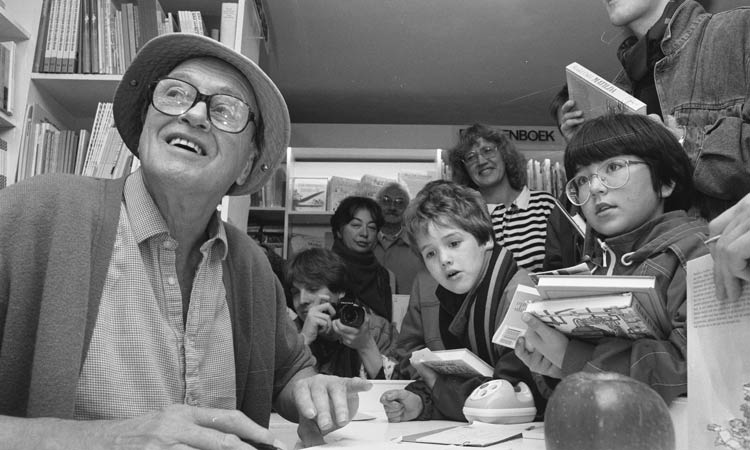
Energy crackled from Dahl’s life. His memoirs, Boy And Going Solo, mix fact and fiction casually, but the truth is remarkable enough (the authorised biography of Dahl by Donald Sturrock is recommended, as is the unauthorised one by Jeremy Treglown). By the time he was 25, Dahl had left England, lived in Africa, enlisted as an air pilot when World War II broke out, survived a terrible crash landing which fractured his skull, and recovered to fight in deadly air battles. He was just getting started.
Before Dahl was 30, he’d become an attaché in Washington and started publishing his first stories. Most reflected his own experiences in the air, but he also wrote a fantastical story about gremlins: mischievous creatures that caused no end of mechanical trouble for harried fighter pilots. Dahl didn’t invent the gremlins, which were a long-standing RAF myth, but he certainly popularised them. The book introduced Dahl to Walt Disney, who nearly filmed The Gremlins, and to Hollywood society. Another fan was the First Lady Eleanor Roosevelt, who invited Dahl to the White House.
The young Dahl could claim friendship with not just Disney and FDR, but with the starry likes of Noel Coward, Spencer Tracy and Ginger Rogers. As a handsome unattached man with a personality that could be politely called rakish, there are lurid stories of his sexual adventures. They must have impressed another of Dahl’s friends from that time, Ian Fleming. Dahl worked with the future creator of 007 for a spell in a branch of the British secret service.
When the war ended, Dahl returned to England and to something closer to normality. His writing career was impeded by a couple of disappointments, including his bleak first novel Some Time Never (see box-out). However, he sold more short stories, which moved away from his war experiences. These were stories of scams and high-stakes gambles, laced with the macabre humour that would be his signature.
His story ‘Man From The South,’ for instance, depicts a man who’s impressed by a youth’s cigarette lighter. He offers the boy a tempting wager, promising the stakes are nothing that the boy can’t afford. He’s true to his word. If the boy lights his lighter ten times in succession, then the man will give him a Cadillac. But if the lighter fails just once, the man has a butcher’s blade poised ready over the boy’s little finger…
It was these Dahl stories which first came to the screen, even before Way Out. ‘Man From The South’ was adapted as a 1960 episode of Alfred Hitchcock Presents, with Peter Lorre coveting the pinky of a young Steve McQueen (decades later, Tarantino spoofed the story in his segment of Four Rooms). Hitchcock himself directed a TV version of ‘Lamb To The Slaughter,’ one of Dahl’s most famous tales, about an angry wife’s revenge.
Dahl would later explain his reasoning behind this particular tale. “There’s such a narrow line between the macabre and the laughter,” he said in 1984. “For example, if a woman who’s deeply in love with a man, and finds he’s been doing nasty things with some other woman, and crowns him with a blunt instrument and kills him, that’s tragedy.
“But if she happens to have a frozen leg of lamb in her hand and crowns him with that, then (the audience) begins to titter. And then, if she takes the frozen leg of lamb, puts it in the oven, cooks it and feeds it to the detectives who are looking for the murder weapon, that’s comic.”
Actress Patricia Neal, who was in The Day The Earth Stood Still before becoming Dahl’s first wife, claims the ‘leg of lamb’ idea was given to Dahl by his friend Ian Fleming. After Fleming died, Dahl would be the credited scriptwriter on one of the most iconic Bond films, You Only Live Twice. It was very different from Fleming’s source book, complete with a volcano base and Donald Pleasance’s cat-stroking. The validity of Dahl’s script credit was later contested by Harold Jack Bloom, who was credited with additional story material but claims he made up everything himself. Today, it’s impossible to know.
There’s even more fog over Dahl’s script credit on another Fleming adaptation, the 1968 musical Chitty Chitty Bang Bang, about a magic flying car. Dahl clashed bitterly with its director Ken Hughes, who again claimed he wrote it all himself… though Dahl’s biographer Donald Sturrock points out that the film’s most infamous character, the deeply disturbing Child Catcher, looks terribly like a Dahl creation (there’s no such character in Fleming’s book).
By Chitty Chitty Bang Bang, Dahl was well established as a children’s writer. Although his first children’s story was the wartime ‘Gremlins’, his true breakthrough was James And The Giant Peach, published in 1961 to huge acclaim. Much of James is set in the air, aboard the title peach as it’s borne by seagulls on strings through a wondrous cloud-world. James was plainly informed by Dahl’s time as a fighter pilot, in the heavenly respites between battles, when he did not have to kill or be killed.
Charlie And The Chocolate Factory soon followed in 1964. The story of a little boy who wins a Golden Ticket to visit the magical factory cemented Dahl’s reputation as a children’s laureate. Actually, three of Dahl’s most beloved books – The BFG, The Witches and Matilda – wouldn’t be published till the Eighties, towards the end of his life. Their seeds, though, could be much earlier.
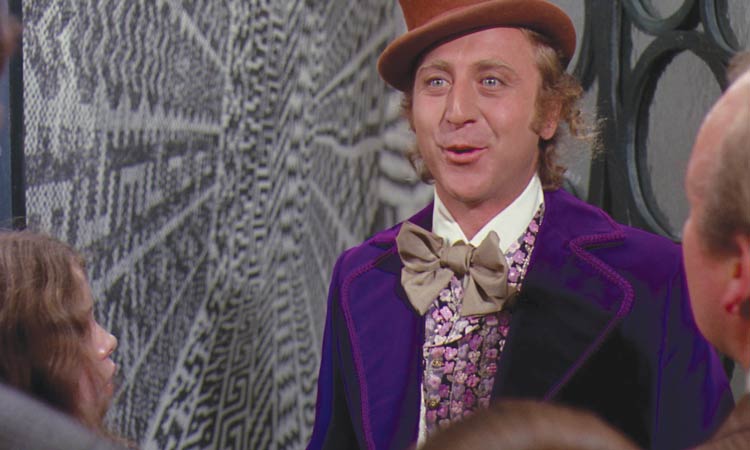
The BFG, for example, grew out of stories Dahl had told his kids, about a friendly giant who creates good dreams and blows them into the bedrooms of children. After telling his own children the stories, Dahl would sometimes get a ladder, climb up outside their window and stir the curtains for them to see, a dedicated dream maker.
The Big Friendly Giant is loveable, as are many of Dahl’s characters: the ebullient chocolate king Willy Wonka, the adorable insects in the giant peach, the indomitable Norwegian gran who’s a Van Helsing scourge for witches. But the witches (of The Witches) are terrifying, like the child-eating unfriendly giants in The BFG, and the ogre-ish Miss Trunchbull in Matilda.
“Dahl’s writing has sharp edges,” Gardam says. “For all the Wonka chocolate, his stories are not sugar-coated. But Dahl is always on the side of the child. Dahl is the guide, teaching them truths. The world can be a scary place but he’s showing them how to make their way through it. He explains things to children, whether it’s the signs to spot a witch, or why Mrs Twit in The Twits became truly ugly, because she thinks nasty thoughts. Crucially, he balances this with hope and love, as his child heroes ultimately find their own wonky happiness.”
Dahl often disliked how his characters were reworked in film adaptations. Although he had a script credit on 1971’s Willy Wonka & The Chocolate Factory, a musical film of his Charlie book, he was incensed by the rewrites by an uncredited David Seltzer, who’d later write the Satanic The Omen. Maybe that explains the infamously terrifying riverboat scene in the film, where Gene Wilder’s Wonka takes a poem from Dahl’s book and screams it demonically at the audience.
Dahl disliked Wilder’s extraordinary performance as Wonka, finding it pretentious; he’d wanted Spike Milligan. He was even more scathing about the 1990 film of The Witches, calling it a “stupid horror film”. We can only guess what he would have thought of later screen interpretations, such as Johnny Depp’s Wonka in Tim Burton’s Charlie; Mara Wilson as Matilda in the 1996 film; or George Clooney’s fretful mid-life take on Fantastic Mr Fox in the 2009 film by Wes Anderson.
Gardam points to the fundamental challenge of translating a beloved book to a different medium. “It’s not that a film should precisely copy every detail of a book; success depends on whether the filmmakers’ vision aligns with the version of the book that’s in your own head.” Of course, it’s utterly subjective. Gardam points out how some of the Dahl film adaptations, such as Gene Wilder’s Wonka and the Matilda film, are now beloved in their own right by people who met them as children: “Some people will love them for the rest of their lives.”
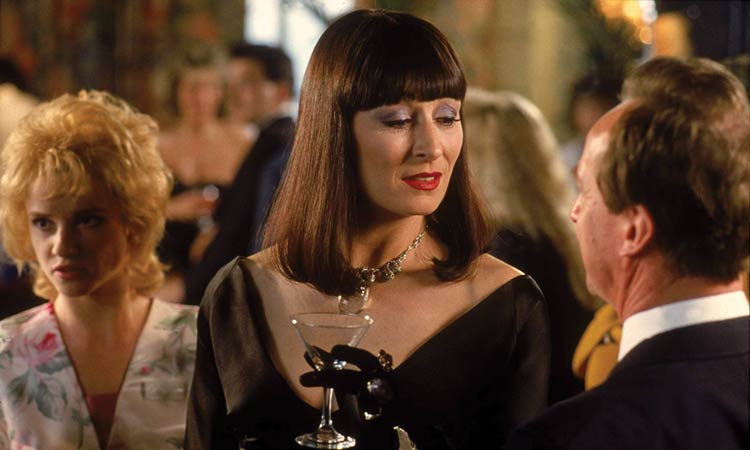
But will Dahl himself stay beloved? Like James Bond and Ian Fleming, Dahl is often tagged as a relic, a sexist, misogynist dinosaur. He was a natural provocateur and often gloried in causing offence. To use a phrase of his, “explosions are exciting.” Heaven knows the Twitter storms he would have cause if he was alive today.
The charge sheet drawn up by Dahl’s critics is long, including his bullying, his boastfulness, his racism – the national stereotyping in some of his stories is outrageous, and Dahl was also charged with far uglier anti-semitism. As for misogyny, even the editor who worked with Dahl on The Witches worried about how a book about monstrous, child-murdering women who should be “rounded up and put in the meat-grinder” (Dahl’s words!) might be received. Dahl told him: “I am not as frightened of offending women as you are,” pointing out that the one heroic adult in the book is the witch-battling granny.
Dahl’s prosecutors might skip The Witches, though, and go straight to the most horrific story that Dahl ever wrote for adults. ‘The Last Act’ was published in Playboy magazine in 1966. It involves explicit sex, a horribly fragile woman, and a Bond-smooth male operator who plays his victim’s emotions with surgical cruelty (he’s a gynecologist).
The story has no overt violence, but reading it is like watching the ‘gaslighting’ segment in Lars Von Triers’ infamous The House That Jack Built. Indeed, Dahl’s story is about gaslighting too. Yet it’s horrible precisely because Dahl spends much of the story making you care for the woman character. Whatever Dahl was thinking when he wrote it (and his comments on the story are crude), ‘The Last Act’ could have been designed to make readers hate men.
And even the most horrific Dahl fiction, the kind that never gets adapted for the screen, can suddenly turn into magic. ‘The Swan’ is a harrowing story of boys bullying and terrorising another boy, with the real threat of murder, but it takes an amazing swing into fantasy in the last lines. Characteristically for Dahl, the denouement involves flying.
And Dahl’s legacy in the fantasy genre seems secure. Much of Harry Potter’s first pages, for example, read like pure Dahl. There’s the grotesquely coarse, boorish Dursley family, trapping helpless little Harry under the stairs. He’s in much the same plight as James toiling under his aunts Sponge and Spice, or Matilda in the power of Miss Trunchbull.
Then there’s Dahl’s Charlie sequel, Charlie And The Great Glass Elevator. Of his children’s books, it tends to be overlooked in retrospectives of his work, which is understandable. It’s structurally wonky and self-indulgent, and much less good than the original. But it’s also fascinating.
After all, it features a manic madman (Wonka) in a magic box (the Glass Elevator) that can go pretty much anywhere. Wonka accidentally ends up in orbit, where he confounds Earth authorities and fights monstrous space aliens – the blobby Vermicious Knids – with his loyal companion, Charlie. Sound a little familiar? Great Glass Elevator was published in 1972, well before the ‘manic’ version of Doctor Who was established by Tom Baker. And like a Time Lord, Dahl regenerates for each new generation.
